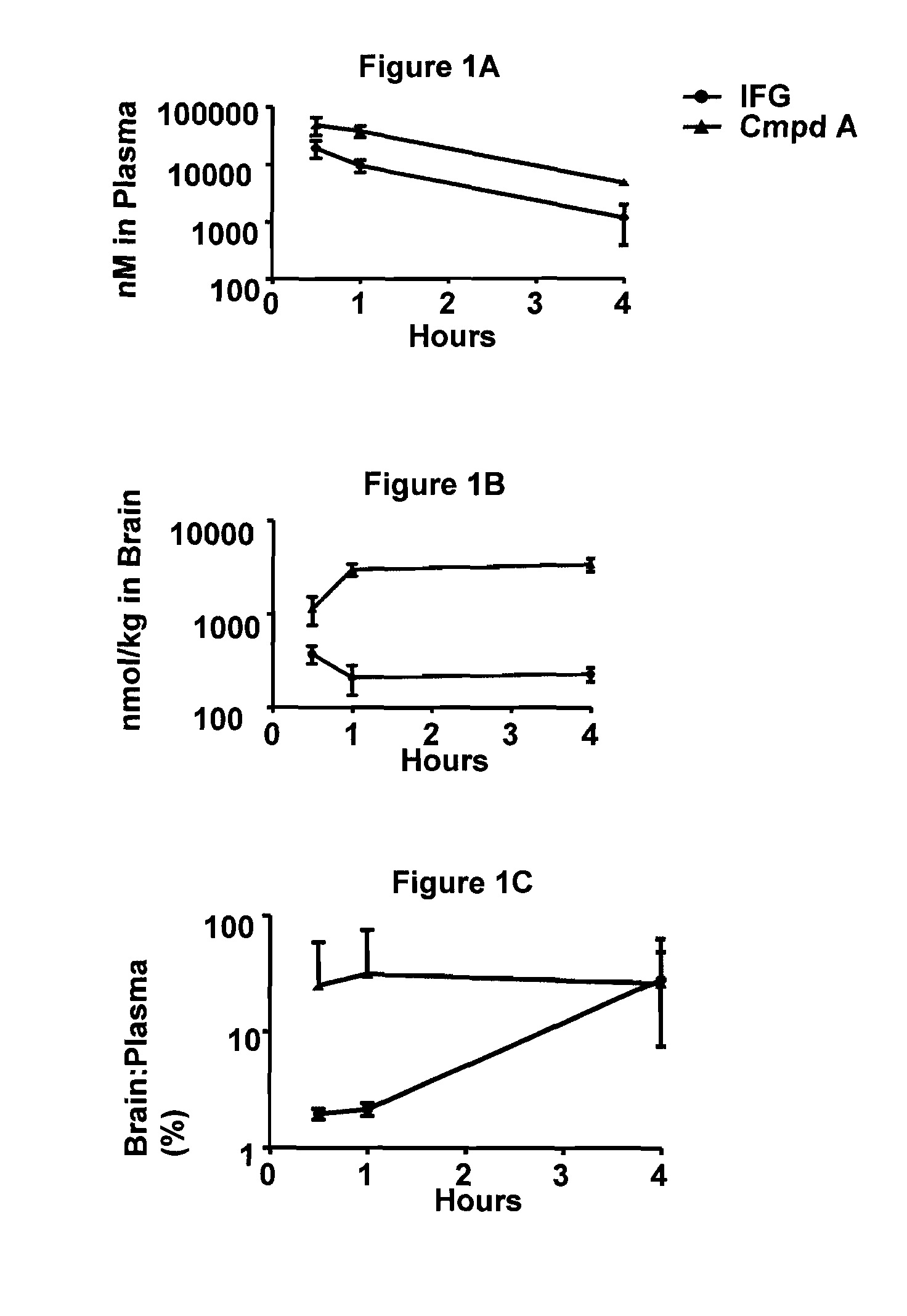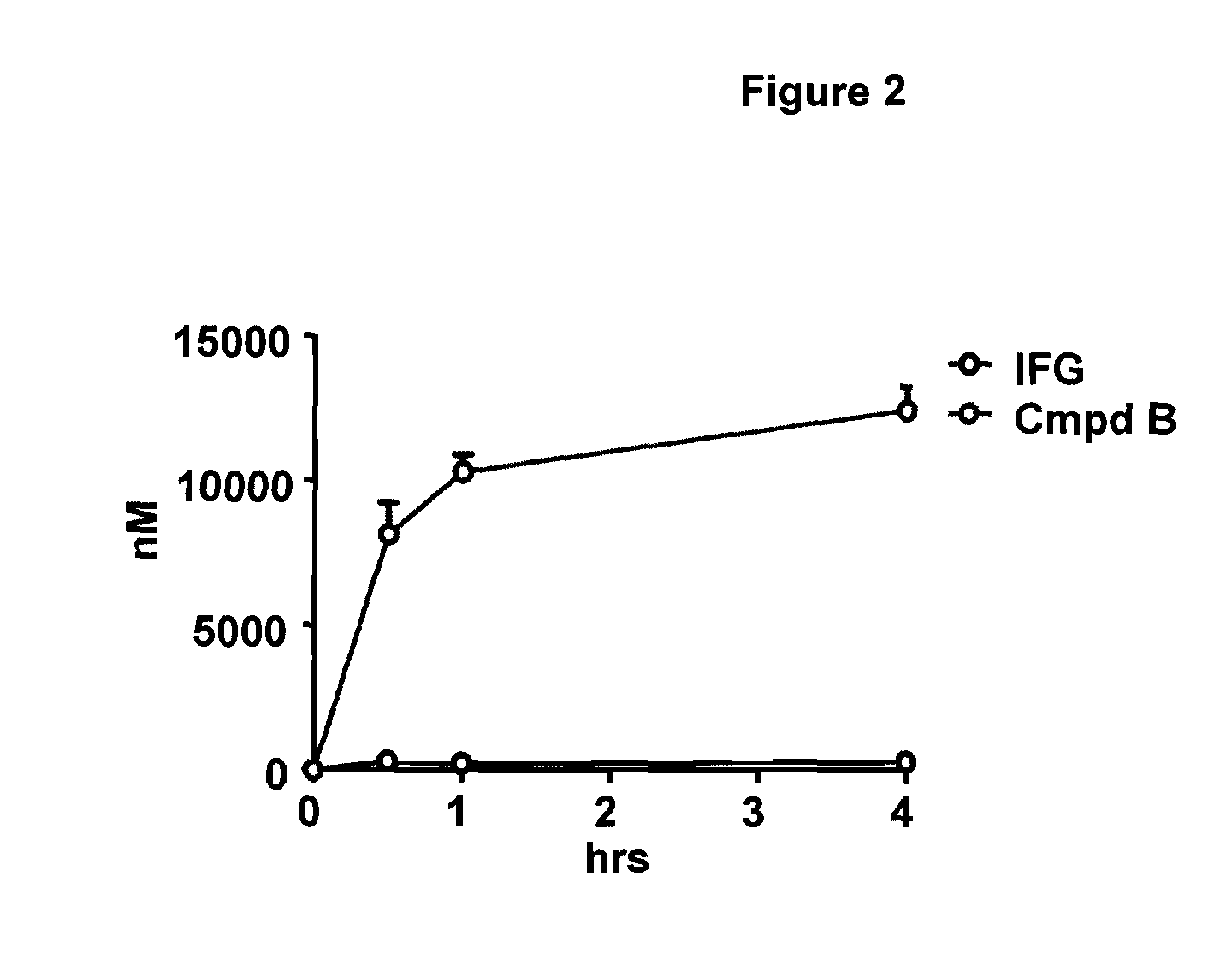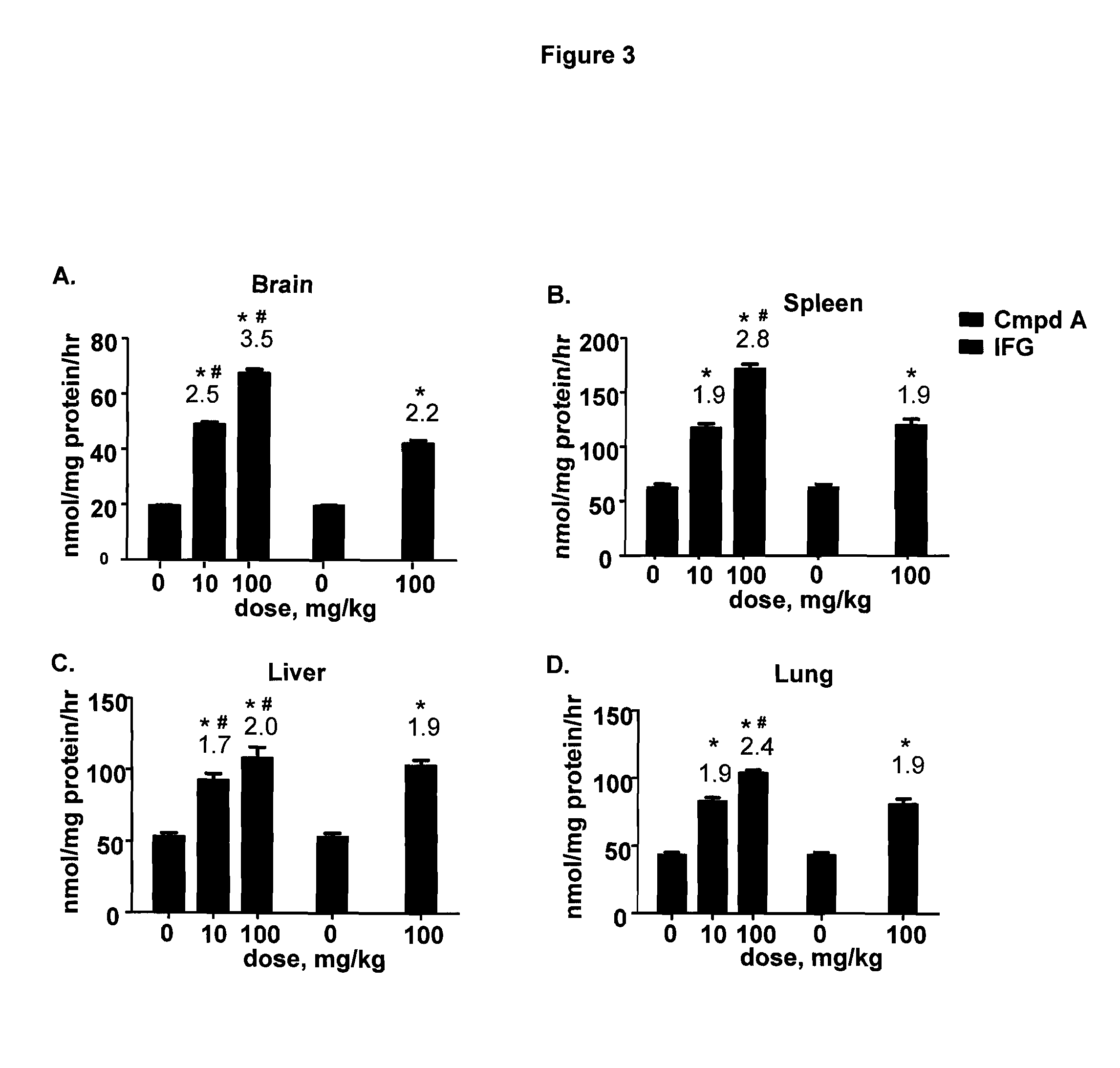Methods for preventing and/or treating lysosomal storage disorders
a technology of lysosomal storage and lysosomal enzymology, which is applied in the direction of metabolism disorders, instruments, peptide/protein ingredients, etc., can solve the problem that people affected by gaucher's disease may also be more susceptible to infection
- Summary
- Abstract
- Description
- Claims
- Application Information
AI Technical Summary
Benefits of technology
Problems solved by technology
Method used
Image
Examples
example 1
Determination of Inhibition Constants
[0081]The binding affinity (defined here by Ki binding constant) of GCase for small molecule pharmacological chaperones described in this document were empirically determined using enzyme inhibition assays. In brief, the enzyme inhibition assays used monitored the ability of test compound to bind and prevent the hydrolysis of a fluorogenic substrate in a concentration-dependent manner. Specifically, the enzyme activity of recombinant human GCase (rhGCase; Cerezyme®, Genzyme Corp.) was measured using the 4-methylumbelliferyl-β-D-glucopyranoside (4-MU-β-D-Glc) fluorogenic substrate in the absence or in the presence of varying amounts of each test compound. The resultant data were analyzed by comparing all test samples to the no inhibition control sample (no compound; corresponding to 100% enzyme activity) to determine the residual enzyme activity in the presence of test compound. The normalized residual activity data were subsequently graphed (on y...
example 2
Blood Brain Barrier Penetration
[0085]The blood-brain barrier (BBB) penetration of reference compound (IFG-tartrate) and test compounds (IFG-derivatives, the hydrochloride salt form of Compound A and Compound B) were assayed after oral administration to mice. For this purpose, 8-week old wild-type male mice (C57BL / 6) were administered a single 30 mg / kg (free base equivalent) p.o. dose of reference or test compound by gavage (n=3 mice per time point). Dosing solutions were prepared in water. After dosing, mice were euthanized with CO2 at the following time points: 0-, 0.5-, 1-, and 4-hour post-dose. After euthanization, whole blood was collected from the inferior vena cava into lithium heparin tubes. Similarly, brains were collected from each mouse. Plasma was derived by spinning whole blood at 2700 g for 10 minutes at 4° C. followed by storage on dry ice. Whole brains were washed in cold PBS to remove contaminating blood, blotted dry, flash frozen on dry ice, and ultimately stored at...
example 3
GCase Enhancement
[0088]The ability of orally administered test compounds (the hydrochloride salt form of Compound A and Compound B) to elevate GCase levels as compared to reference compound, IFG-tartrate, was assessed in mice. For this purpose, 8-week old wild-type male mice (C57 / BL6) were administered a single p.o. (gavage) dose (detailed in FIGS. 3A-D, 4A-D, and 5A-D) of control, reference compound (IFG-tartrate) or test compound (the hydrochloride salt form of Compound A or Compound B). Seven animals were used per dose. The dosing solutions were prepared in water. Compounds were administered over 2 weeks as follows: week 1, Mon-Fri (On), Sat-Sun (Off); week 2, Mon-Thu (On); necropsy on Friday. Thus, a total of 9 doses (dosing solutions prepared fresh every day) were given to each mouse, with a 24-hour washout between the last dose and necropsy.
[0089]After completion of dosing, mice were euthanized with CO2 and whole blood was drawn into lithium heparin tubes from the inferior ven...
PUM
| Property | Measurement | Unit |
|---|---|---|
| pH | aaaaa | aaaaa |
| pH | aaaaa | aaaaa |
| temperature | aaaaa | aaaaa |
Abstract
Description
Claims
Application Information
 Login to View More
Login to View More - R&D
- Intellectual Property
- Life Sciences
- Materials
- Tech Scout
- Unparalleled Data Quality
- Higher Quality Content
- 60% Fewer Hallucinations
Browse by: Latest US Patents, China's latest patents, Technical Efficacy Thesaurus, Application Domain, Technology Topic, Popular Technical Reports.
© 2025 PatSnap. All rights reserved.Legal|Privacy policy|Modern Slavery Act Transparency Statement|Sitemap|About US| Contact US: help@patsnap.com



